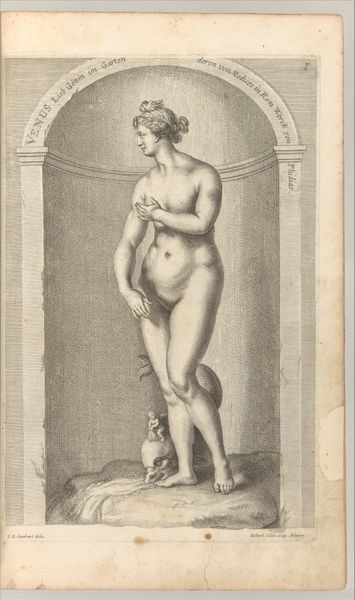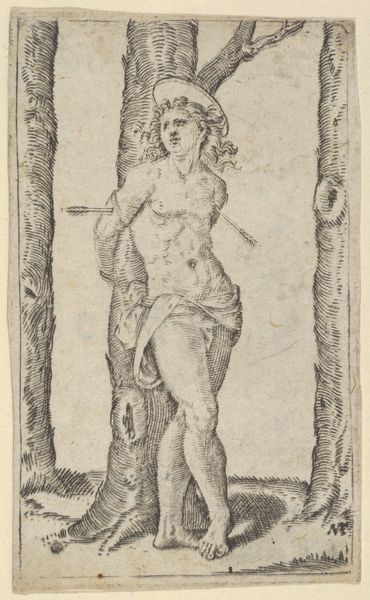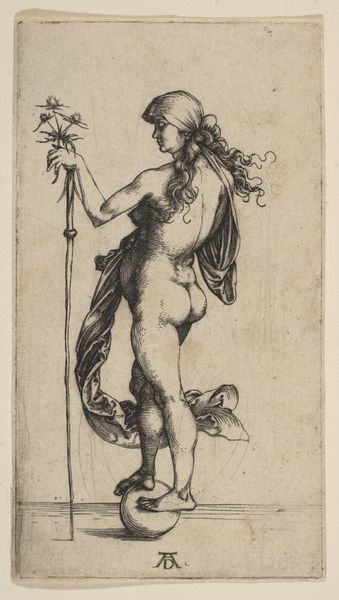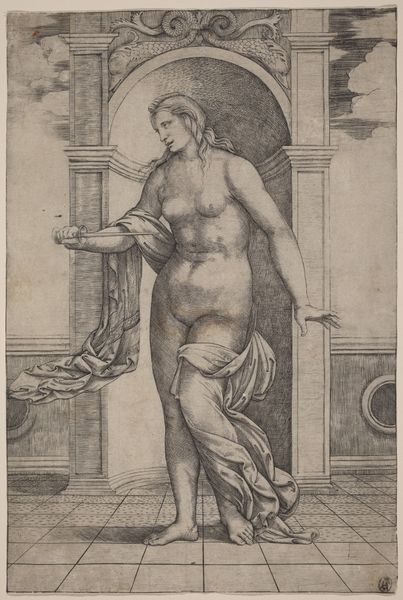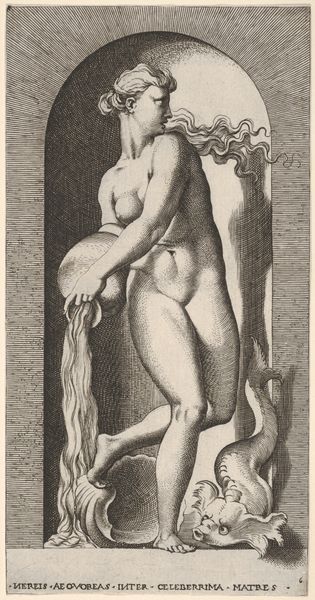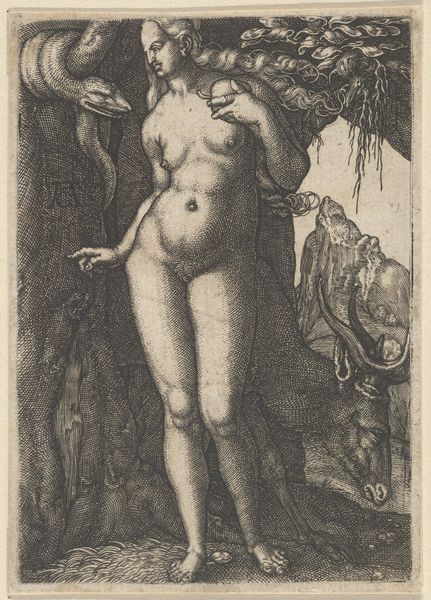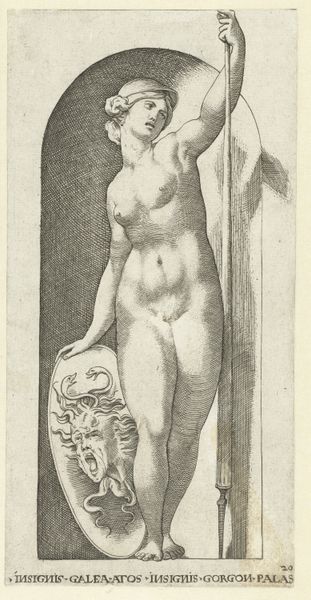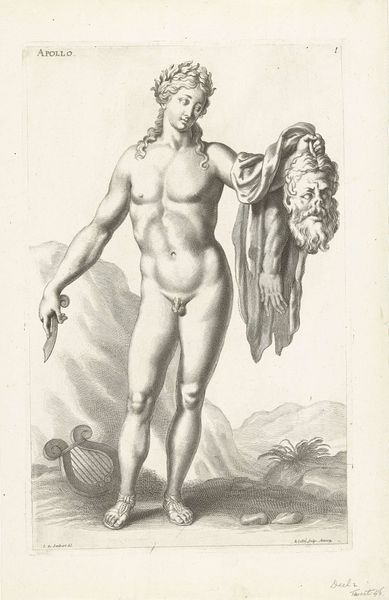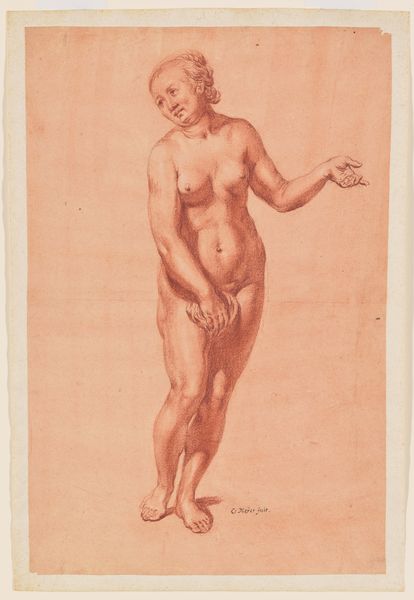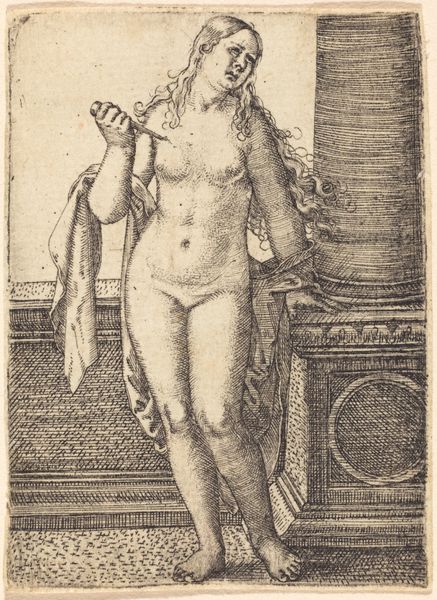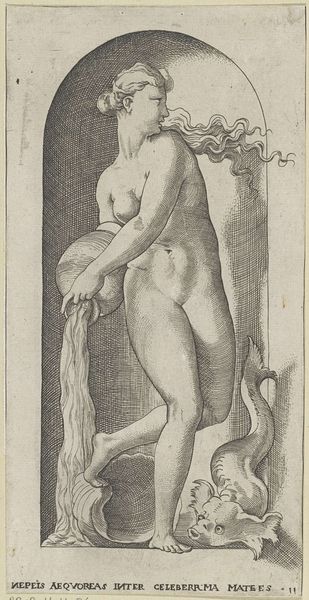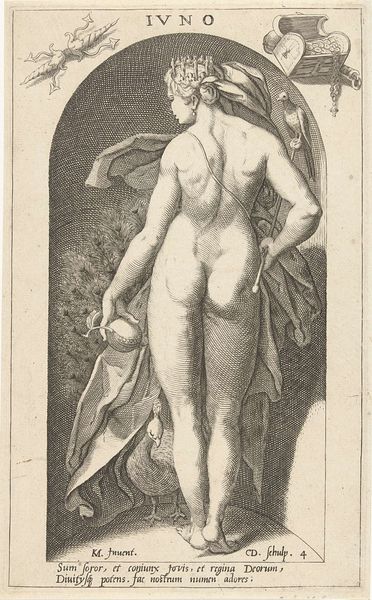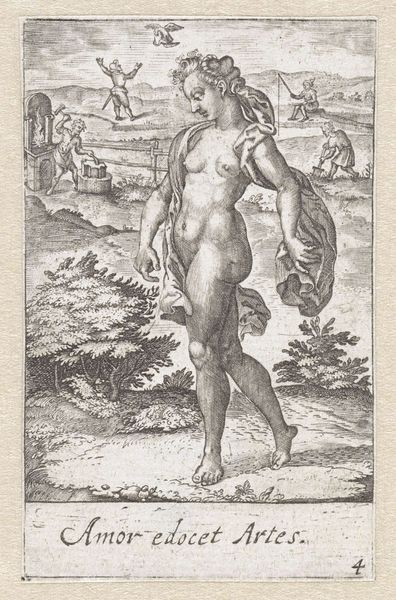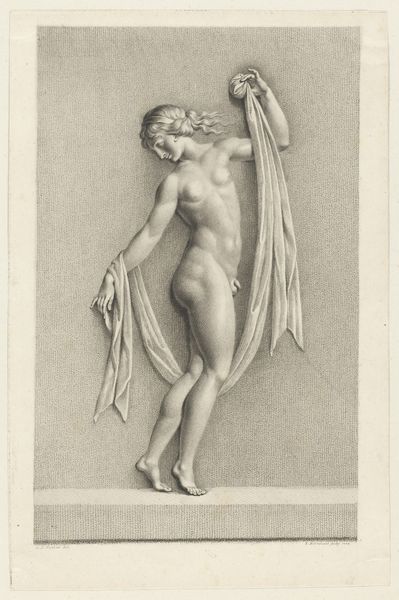
drawing, print, engraving
#
drawing
#
allegory
# print
#
mannerism
#
figuration
#
history-painting
#
nude
#
engraving
Dimensions: plate: 6 1/16 x 3 5/8 in. (15.4 x 9.2 cm)
Copyright: Public Domain
Editor: This is "Veritas, from Proposopographia," an engraving made between 1580 and 1595 by Philips Galle. The starkness of the figure against the lined background is so striking, almost confrontational. How do you interpret this work? Curator: Well, truth, as represented here, isn’t hiding anything, is she? There’s a boldness to the nudity, an almost unsettling directness. You see the dove hovering above her head, and the sun emanating from her palm – classic symbols. But consider the context! Mannerism was all about artifice and elegance, and here we have Veritas presented...undressed, quite literally stripped bare. It’s almost subversive, wouldn’t you agree? A deliberate move away from the decorative flourish. It reminds me of certain truths one finds after too much port, quite plain but inescapable. What about the setting, have you taken that into consideration? Editor: That's a great point about the contrast with Mannerism. The block she stands on also feels... solid, unglamorous. Like truth is grounded. Curator: Exactly! Think of the period’s fascination with allegories. She *is* truth, revealed. But consider those lines, those tiny deliberate strokes, a painstaking practice, for sure! What kind of personal truth can we pull from that labor? That in the slow unveiling, and disciplined rendering, we find a lasting beauty. Editor: I hadn't thought about it that way, but it definitely shifts my understanding of the piece. Thanks for illuminating that. Curator: And thank *you* for nudging me to reconsider my own perspective. Truth, like art, has endless layers, doesn't it?
Comments
No comments
Be the first to comment and join the conversation on the ultimate creative platform.
